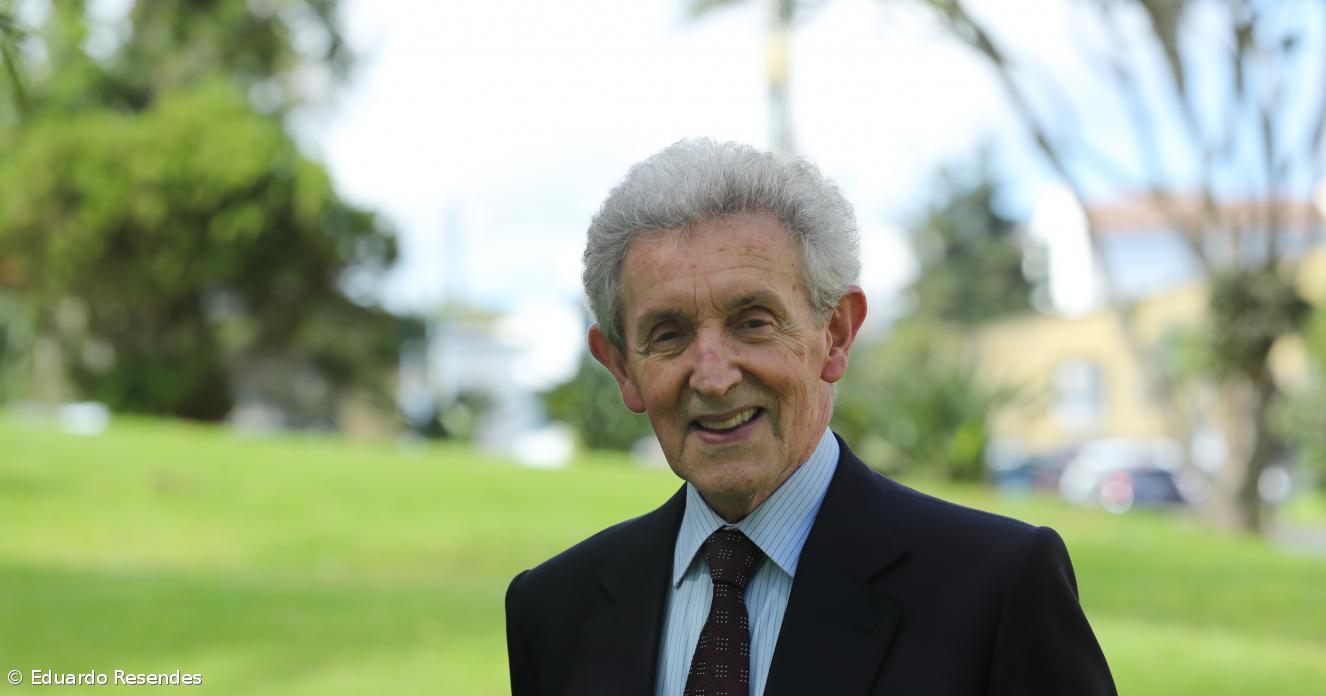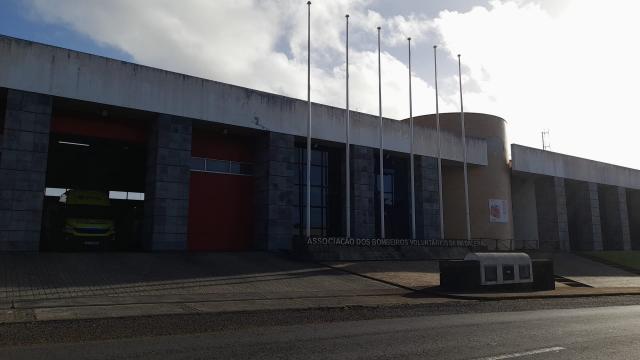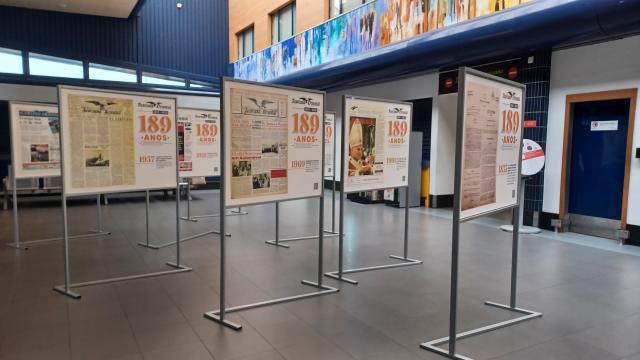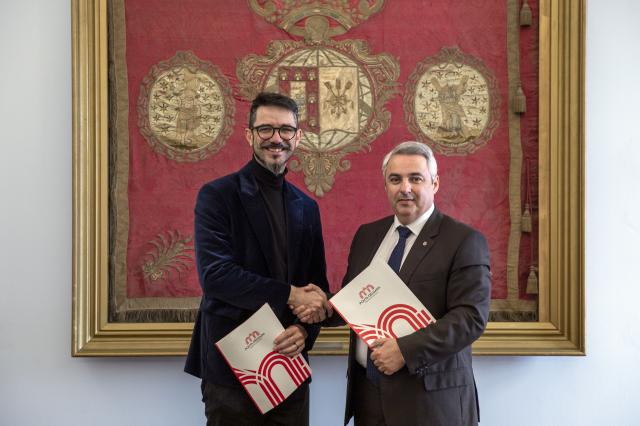Autor: Tatiana Ourique
"The pyramids of Egypt, the Vatican... we are on the same shelf," says Francisco Maduro-‑Dias in "Angra do Mundo, the classification process". Since December 7, 1983. Forty years ago.
Álamo Meneses, Álvaro Monjardino, Assunção Melo, Cláudia Cardoso, Joel Neto, Jorge Forjaz, Jorge Paulus Bruno, José Guilherme Reis Leite, Francisco Maduro-Dias and Mikhaël De Thyse take part in this documentary produced by Media 9 and sponsored by the Angra do Heroísmo City Council.
"I am from the post-quake generation. For me and Eduarda Mendes, who collaborated with me on this project, Angra do Heroísmo winning the UNESCO award was always a given, but it was always associated with the idea that it was so because of the earthquake and reconstruction that the city had earned this distinction. This was a somewhat erroneous idea, which we discovered when we made this documentary. Angra do Heroísmo is not a World Heritage Site because of the earthquake, but because of its crucial importance in the Portuguese discoveries and the way it grew as a result of this epic period in global history. Probably without Angra, with its port and bay, the Portuguese discoveries would not have had the structural form they did. If I could go back in time, I would probably choose that time in history to live and witness the achievements and dynamics of Angra with all its Atlantic globality," said the Azorean director.
Regarding the choice of participants in the documentary, Paulo Pereira, a 36-year-old director from Terceira Island, said: "The presence of the 'fathers' of the classification was indisputable, the elite group that made up the whole process and who, practically alone, put Angra on the UNESCO map. They were in political positions at the time and were in favor of preserving heritage. They combined this preservation with the historical grandeur of the city to bring the idea of classifying the central area of Angra do Heroísmo to a successful conclusion. For all this, and much more, it was imperative to collect the testimonies of those who led the process. But this work is not just about stories from the past: "we wanted to bring together elements of Angra's current critical mass, because that is the only way to know what still needs to be done. As several of the people involved in this project say, a heritage city is not a museum city. We need to create a document that also reflects what we have and where we want to go," says the journalist.
The language of the documentary presents the dichotomy of archive images with recent images and a touch of art by urban sketcher Emanuel Félix. "The design of the city of Angra has remained practically intact since its foundation until today. The design of streets and buildings tell the story of the city itself, so it was a case of taking the camera, waiting for the right light and going out into the street. Angra is a very photogenic city and it was interesting to overlay old maps of the city with current images and see that the streets and buildings remain in the same places almost 500 years later. But I wanted to show a different view of the city. As well as resorting to RTP's historical archives and retrieving maps and engravings from the collections of the Angra Museum and the Angra Public Library, I asked Emanuel Félix to draw the city as it is today, using his distinctive line, and to imagine the city of yesteryear, full of ships and caravels in its bay, and the commercial exchanges in which Angra was the scene. It was from the interconnection of these elements that a documentary was produced with a very current narrative that tells the story of the classification of the central area of the city of Angra do Heroísmo," he says.
Of all the records that, for Paulo Pereira, added value to the narrative, there is one that he particularly emphasizes: "it is not surprising that Álvaro Monjardino's testimony was so striking. A man who marked the life and history not only of Terceira, but of the entire region, who, at the age of 93, did not just recall memories, but also left questions for the future. It is like having the opportunity to live through those times, through his story, through the memories he passed on and also through the difficulties he went through in order to move this whole process forward."
The research work allowed the journalists to learn about the reconstruction options that were on the table in the aftermath of the earthquake. "The exchange of ideas about what the city was and what it could have been was also fundamental. We had access to diagrams and drawings of projects that were made for a completely different city, ideas that ranged from taking advantage of the ruins to the option of razing it to the ground and building anew. We exchanged opinions on post-reconstruction, from those who believe that 20th century architecture could have been integrated in the 1990s to those who believe that the city's layout should not be changed. There were 10 different voices who, among themselves, told each piece of the story from their own perspective, in the light of the position they held/hold, or even the way they want to see this city from now on."
With the making of the documentary, the director confirmed the idea that, for the population, the only concern was to rebuild a destroyed city. That is why the "elite" who thought up and guided the city's destiny, played a crucial role in the process. "The priority was to rebuild houses, entire parishes. We must not forget that 70% of the buildings were damaged by the 1980 earthquake. The majority of the population was not going to look at the preservation of heritage, or at how the reconstruction would proceed, whether or not it was a question of having a roof over their head. I think this awareness has developed over time, as the city itself has settled down. Today this distinction is unquestionable, but it was not always like this. It was seen as something that had been carried out by a group of intellectuals and did not say much to the majority of the population."
It was the work of a group of thinkers who, in the midst of chaos, had the lucidity to rebuild an entire city, while respecting its identity and the role it played as a stopover for Atlantic shipping.
The documentary was presented on December 6 at the Angra do Heroísmo Cultural and Congress Center and was shown on RTP-Açores on December 22.





